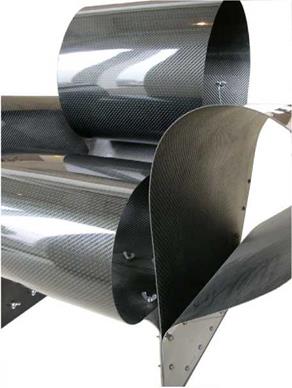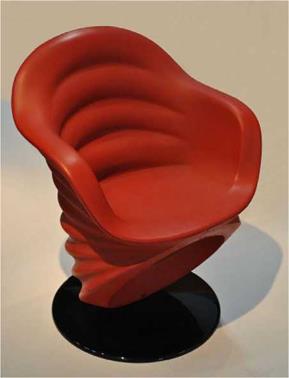Wallace Carothers and a team at DuPont, building on work begun in Germany earlier in the twentieth century, developed synthetic rubber in 1930, though natural rubber was harvested in Peru many centuries earlier. Synthetic rubber is called neoprene, a substance more resistant to oil, gasoline, and ozone than natural rubber. It is also used as an adhesive and as a sealant in industrial uses. Neoprene can be purchased as a soft foam (neoprene 10-20) as well as a hard synthetic rubber (neoprene 60-70).
|
|
||
|


Rubber in furniture is generally reserved for wheels, bumpers, and mats. Natural rubber is an excellent, inexpensive, general-purpose elastomer. Some furnishings employ elastomers and rubber as an integrative and substantial material (Figure 7.55).





